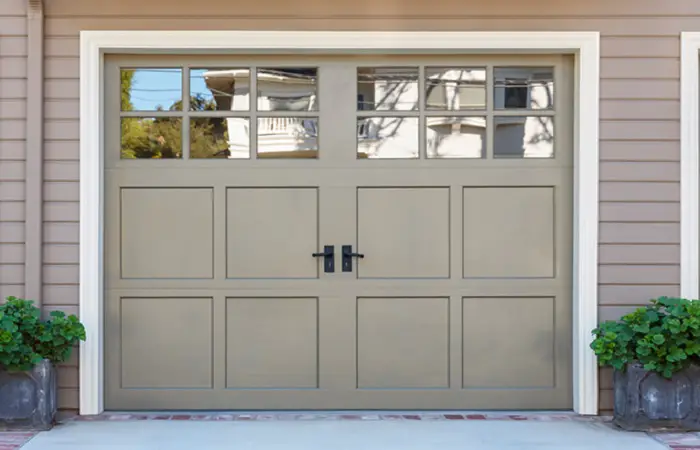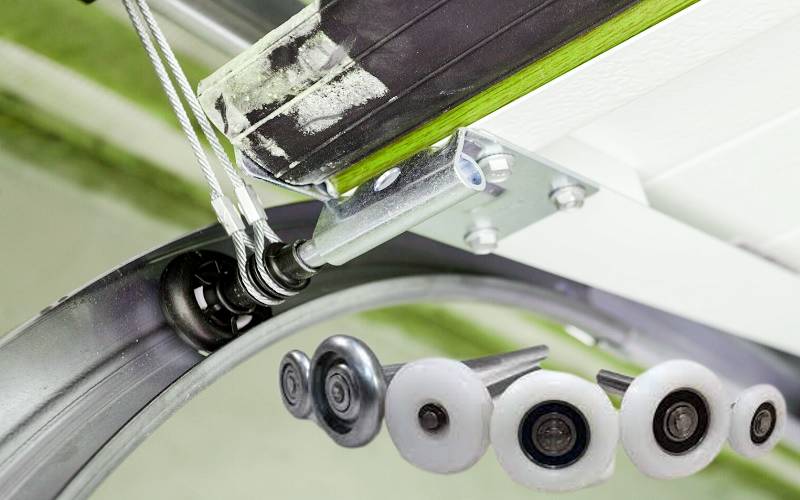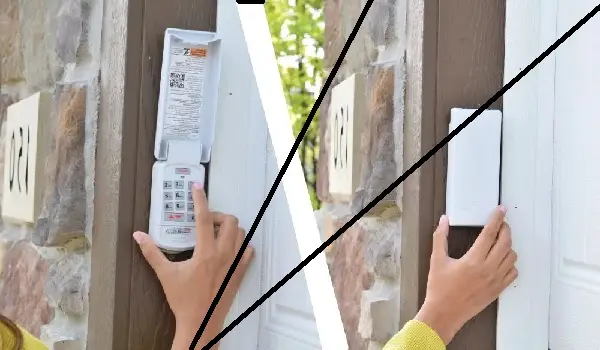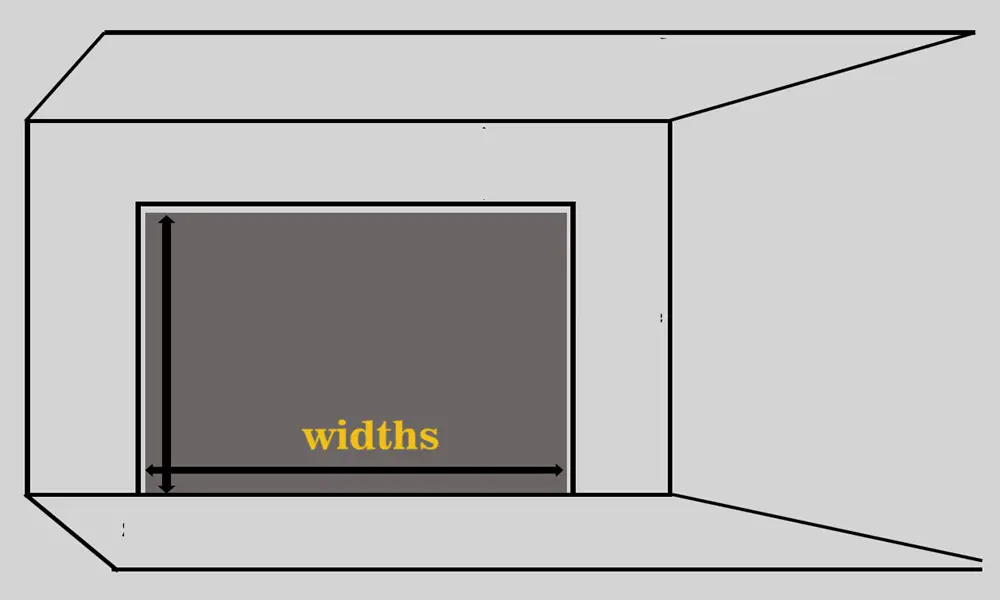What is a Garage Door Torsion Spring Size Chart?
Torsion spring conversion chart Is essential when it comes to DIY repairs on garage door. Whether you’re a seasoned DIY […]
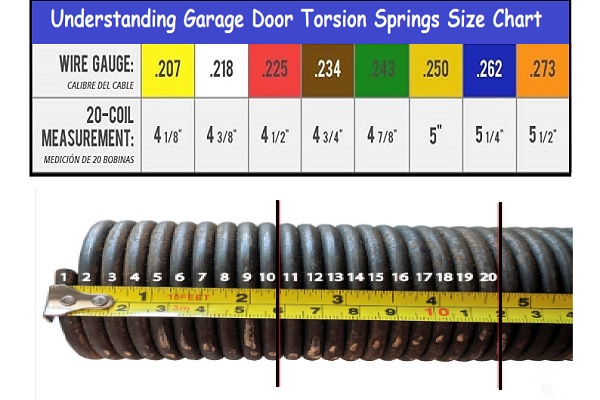
Torsion spring conversion chart

Is essential when it comes to DIY repairs on garage door. Whether you’re a seasoned DIY enthusiast or just looking to fix a small issue, understanding the sizes of torsion springs is crucial. This comprehensive guide will provide you with a conversion chart to make the process easier and more efficient.
In this guide, you’ll find detailed information on what torsion springs are and how they function. We’ll explain the importance of having a conversion chart on hand and guide you through the steps of using it effectively. Additionally, we’ll explore the most common garage door spring sizes and provide troubleshooting tips for common issues.
Safety should always be a top priority, so we’ll also cover the necessary precautions you need to take when working with torsion springs. Finally, if you’re unsure about tackling the repairs on your own, we’ll provide advice on when it’s best to seek professional assistance.
With the help of this guide, you’ll be equipped with the knowledge and resources to handle torsion spring repairs with confidence. Let’s get started on achieving a smoothly functioning garage door!
Key Takeaways:
- Using a torsion spring conversion chart is crucial for DIY repairs on your garage door.
- Understanding what torsion springs are and how they function is essential for effective repairs.
- The conversion chart simplifies the process of determining the right spring size for your specific garage door model.
- Always prioritize safety when working with torsion springs and follow the recommended precautions.
- If uncertain, it’s best to seek professional assistance for torsion spring repairs.
What Are Torsion Springs?
In this section, we’ll delve into what torsion springs are and how they function. Understanding the basics of torsion springs will give you a better grasp of why having a conversion chart is essential for garage door repairs.
Torsion springs are essential components of garage doors. They store mechanical energy when twisted or coiled, exerting torque or force that helps lift and lower the door. Unlike extension springs, which stretch to counterbalance the weight of the door, torsion springs work by exerting rotational force.
These springs are typically installed above the garage door, parallel to the door’s opening. They consist of tightly wound metal coils with a stationary cone at one end and a winding cone at the other. When the door is lowered, the torsion spring is under tension. As the door is raised, the spring unwinds, releasing its stored energy to counterbalance the weight of the door.
“Torsion springs play a crucial role in the smooth and safe operation of your garage door. Without a properly functioning torsion spring, the door may become difficult to open or close, posing a safety risk.”
How Torsion Springs Work
The operation of torsion springs can be better understood through the principle of mechanical energy. When the door is at rest, the torsion spring is tightly coiled and stores potential energy. This energy is then converted into kinetic energy as the spring unwinds, providing the necessary force to raise the door.
As the door is lowered, the weight of the door causes the torsion spring to wind up, accumulating potential energy. This stored energy is released when the door is raised, allowing the spring to unwind and lift the door smoothly.
Torsion springs are designed to last for a specific number of cycles, typically between 10,000 to 20,000 cycles. After reaching their lifecycle limit, torsion springs may break or lose their tension, requiring replacement for optimal performance and safety.
| Torsion Spring Lifespan | Estimated Cycle Count |
|---|---|
| Standard Residential Torsion Springs | 10,000 cycles |
| High-Cycle Torsion Springs | 20,000 cycles |
Understanding the fundamentals of torsion springs is crucial for any homeowner or DIY enthusiast. By having a clear understanding of how torsion springs function, you’ll be better equipped to handle garage door repairs and make informed decisions when using a torsion spring conversion chart.
Importance of Torsion Spring Conversion Chart
When it comes to repairing or replacing garage door springs, having a torsion spring conversion chart is absolutely essential. This invaluable tool not only simplifies the process but also ensures that you select the correct spring size for your specific needs.
One of the key benefits of using a torsion spring conversion chart is the accuracy it provides. By referring to the chart, you can easily convert the measurements and determine the exact dimensions of the replacement spring required for your garage door. This accuracy is crucial in ensuring proper functionality and preventing any potential issues that may arise from using the wrong spring size.
Another advantage of utilizing a conversion chart is that it saves you time and effort. Instead of manually measuring and calculating, the chart offers a quick and convenient solution that allows you to find the appropriate spring size without guesswork. This time-saving aspect is particularly beneficial for DIY enthusiasts who want to complete their garage door repairs efficiently.
Moreover, a torsion spring conversion chart provides confidence and peace of mind. By relying on accurate measurements, you can be confident that you are selecting the right spring size for your garage door. This eliminates the uncertainty and potential frustration that may arise from using an incorrect spring, ensuring a successful repair process.
Overall, the importance of a torsion spring conversion chart cannot be overstated. It simplifies the DIY repair process, offers accuracy in selecting the correct replacement spring size, saves time and effort, and provides confidence in achieving optimal functionality for your garage door.
| Benefits of Torsion Spring Conversion Chart |
|---|
| Accurate measurements |
| Time-saving tool |
| Eliminates guesswork |
| Confidence in repair process |
How to Use a Torsion Spring Conversion Chart
Using a torsion spring conversion chart may seem daunting at first, but with a little guidance, it becomes an invaluable tool for selecting the right replacement spring size for your garage door. Follow these step-by-step instructions to effectively use a torsion spring conversion chart:
- Measure the Existing Spring: Start by measuring the length and diameter of your current torsion spring. Make sure to measure from coil edge to coil edge for accurate results.
- Refer to the Chart: Locate the torsion spring conversion chart that corresponds to your garage door’s manufacturer and model. Look for the measurements closest to your existing spring’s length and diameter.
- Determine the Wire Size: Once you find your measurements on the conversion chart, note the corresponding wire size. This wire size will serve as a reference when selecting a compatible replacement spring.
- Calculate the Spring Length: Next, calculate the required spring length for the replacement. This can be done by using the spring rate and number of total coils mentioned in the conversion chart. Multiply the spring rate by the number of total coils, and subtract the result from the measurement of the existing spring’s length.
- Select the Replacement Spring: Using the wire size and calculated spring length, find the appropriate replacement spring size on the conversion chart. Ensure the selected spring matches both the wire size and length for optimal performance.
- Install the Replacement Spring: Once you have determined the correct replacement spring size, follow the manufacturer’s instructions for safely installing it. Take proper precautions and seek professional assistance if needed.
Example Torsion Spring Conversion Chart
| Spring Length | Wire Size | Spring Rate | Number of Total Coils |
|---|---|---|---|
| 18.5 inches | .250 inches | 1.75 pounds | 30 coils |
| 20 inches | .262 inches | 1.85 pounds | 32 coils |
| 21.5 inches | .273 inches | 1.95 pounds | 34 coils |
Table: Example torsion spring conversion chart for reference.
By carefully following the instructions and utilizing a torsion spring conversion chart, you can confidently determine the appropriate replacement spring size for your garage door. Remember to prioritize safety and seek professional assistance when necessary.
Common Garage Door Spring Sizes
When it comes to garage door spring replacements, knowing the right size is crucial. Understanding the most common garage door spring sizes and their corresponding conversion chart measurements will help you find the perfect fit for your specific garage door model. Here are some of the commonly used spring sizes:
- 2 inches
- 2.25 inches
- 2.5 inches
- 2.75 inches
- 3 inches
These sizes correspond to the diameter of the springs and are commonly used in various garage door systems. To ensure accuracy, it’s important to measure your existing springs properly or consult a professional for assistance.
Tools and Equipment for Torsion Spring Replacement
When it comes to replacing torsion springs on your garage door, having the right tools and equipment is crucial for a successful and safe repair. Here are the essential items you’ll need to complete the job:
- Torsion Spring Winding Bars: These sturdy metal bars are used to wind and unwind the tension in the springs. It’s essential to use the appropriate size and length of winding bars for your specific springs to avoid any accidents.
- Safety Glasses: Protect your eyes from flying debris or any potential spring-related accidents by wearing safety glasses throughout the replacement process. Safety should always be a priority.
- Socket Wrench Set: A socket wrench set with various sizes of sockets will come in handy for loosening and tightening nuts and bolts during the spring replacement.
- Clamps: Clamps can help secure the door in place while you work on the springs, ensuring that it doesn’t unexpectedly move or fall during the repair.
- Measuring Tape: Accurate measurements are essential when determining the appropriate size of replacement springs. A measuring tape will help you get precise measurements for a smooth replacement process.
- Protective Gloves: Wear protective gloves to shield your hands from any sharp edges or springs during the replacement. Additionally, gloves provide a better grip on the tools, enhancing your safety.
“Having the right tools and equipment is the key to a successful torsion spring replacement.”
By ensuring that you have these tools and equipment readily available, you’ll be well-prepared to tackle the torsion spring replacement task with confidence. Remember to prioritize safety and follow proper procedures throughout the process.
Safety Precautions When Working with Torsion Springs
When it comes to working with torsion springs, safety should always be your top priority. These powerful components can pose serious risks if mishandled, so it’s crucial to follow proper safety precautions throughout the repair process. Here are some valuable tips and guidelines to ensure your well-being:
- Use protective gear: Always wear safety glasses, gloves, and sturdy footwear to protect yourself from potential injuries.
- Secure the area: Before starting any work, make sure the work area is clear of any obstructions or tripping hazards. Keep children and pets away from the area.
- Release tension: Before attempting to remove or adjust a torsion spring, release the tension by winding it down completely. Failure to release the tension could result in the spring snapping back unexpectedly.
- Follow manufacturer guidelines: Each torsion spring may have specific instructions and recommendations provided by the manufacturer. Make sure to read and follow these guidelines carefully.
- Work in pairs: When dealing with torsion springs, it’s always safer to have someone working with you. They can assist in holding or supporting the spring during the repair process.
- Use proper tools: Ensure that you have the correct tools for the job and that they are in good working condition. Using improper or damaged tools can increase the risk of accidents.
- Keep a safe distance: When working with torsion springs, maintain a safe distance from the spring and the winding cone to prevent any sudden movements or projectiles.
- Be cautious of spring characteristics: Torsion springs are under immense pressure, so be mindful of their characteristics. Avoid hitting or jolting the spring, as it can cause it to unwind unexpectedly.
- Seek professional help if unsure: If you’re uncertain about any aspect of working with torsion springs, it’s best to seek professional assistance. Hiring an experienced technician can ensure the repair is done safely and efficiently.
By following these safety precautions, you’ll greatly reduce the risk of accidents or injuries when working with torsion springs. Remember, your well-being is of utmost importance, so take the necessary steps to maintain a safe working environment throughout the repair process.
Troubleshooting Common Torsion Spring Issues
While an incorrect spring size is often the culprit behind garage door problems, there are other issues that may need troubleshooting. This section will guide you through common torsion spring issues and provide effective solutions to resolve them.
1. Uneven Garage Door Operation
If your garage door operates unevenly, with one side closing faster or higher than the other, it could indicate a torsion spring problem. This issue is typically caused by springs that have lost tension or are not properly balanced.
To troubleshoot uneven garage door operation:
- Inspect the torsion springs for signs of damage, such as rust, cracks, or wear.
- Ensure that both springs have the same level of tension and are properly adjusted.
- If the springs appear damaged or imbalanced, they may need to be replaced.
2. Noisy or Squeaking Garage Door
If your garage door makes excessive noise or squeaks when opening or closing, the torsion springs could be the cause. Over time, springs can wear out, lose lubrication, or develop rust, leading to noisy operation.
To troubleshoot a noisy or squeaking garage door:
- Apply a high-quality silicone-based lubricant to the springs, hinges, and other moving parts.
- Inspect the springs for signs of rust or damage and clean them if necessary.
- If the noise persists, the springs may need to be replaced.
3. Garage Door Doesn’t Open or Close Properly
If your garage door doesn’t open or close smoothly or gets stuck halfway, it may be due to torsion spring issues. This problem can occur if the springs are worn, broken, or unbalanced, affecting the overall operation of the door.
To troubleshoot a garage door that doesn’t open or close properly:
- Check for any obstructions or debris that may be affecting the door’s movement.
- Inspect the torsion springs for signs of wear, damage, or imbalance.
- Ensure the cables are properly aligned and not tangled or frayed.
- If the springs are damaged, broken, or unbalanced, they will need to be replaced.
By troubleshooting these common torsion spring issues, you can identify the root cause and take appropriate steps to resolve them. However, if you’re unsure about performing the repairs yourself, it’s recommended to seek professional assistance to avoid any accidents or further damage.
| Torsion Spring Issue | Troubleshooting Steps |
|---|---|
| Uneven Garage Door Operation | Inspect springs for damage and adjust balance. |
| Noisy or Squeaking Garage Door | Apply lubricant and clean springs if necessary. |
| Garage Door Doesn’t Open or Close Properly | Check for obstructions, inspect springs and cables. |
Professional Assistance for Torsion Spring Repairs
If you’re unsure about tackling torsion spring repairs on your own, it’s crucial to know when it’s best to seek professional assistance. While DIY projects can be fulfilling, certain tasks, such as garage door spring repairs, require expertise and specialized knowledge. Hiring a professional for torsion spring repairs comes with several benefits that can ensure the safety and longevity of your garage door system.
Benefits of Hiring a Professional
When it comes to torsion spring repairs, professional assistance offers numerous advantages:
- Expertise: Professionals have extensive experience working with garage door springs and are knowledgeable about the intricacies of different systems. Their expertise allows them to accurately diagnose and address any torsion spring issues, ensuring a proper repair.
- Safety: Garage door springs are under high tension and can be dangerous to handle without proper equipment and training. Professionals have the necessary tools and expertise to safely work with torsion springs, minimizing the risk of injury.
- Efficiency: Hiring a professional allows you to save time and effort. Instead of spending hours researching and troubleshooting the problem, experts can quickly identify the issue and provide efficient solutions.
- Quality Parts: Professionals have access to high-quality torsion springs and other necessary components. They can source genuine parts that meet the specifications of your garage door, ensuring optimal performance and durability.
- Warranty: Reputable repair services often provide warranties on their workmanship and parts. This gives you peace of mind knowing that if any issues arise after the repair, you can rely on the professionals to rectify the problem.
Finding Reputable Repair Services
When seeking professional assistance for torsion spring repairs, it’s essential to choose a reputable and reliable repair service. Consider the following tips:
- Ask for recommendations from friends, family, or neighbors who have recently had their garage door springs repaired.
- Research online reviews and ratings to gauge the reputation of different repair services.
- Check for proper licensing and insurance to ensure the repair service meets industry standards and protects your interests.
- Contact multiple companies and compare estimates, ensuring they provide detailed information about the repair process and any associated costs.
- Ask about warranties or guarantees provided by the repair service to ensure you’re protected in case of any issues.
Remember, investing in professional assistance for torsion spring repairs can save you time, effort, and potential risks. Prioritize your safety and the long-term functionality of your garage door system by relying on experts in the field.
| Benefits of Hiring a Professional | Finding Reputable Repair Services |
|---|---|
| Expertise | Ask for recommendations from friends, family, or neighbors who have recently had their garage door springs repaired. |
| Safety | Research online reviews and ratings to gauge the reputation of different repair services. |
| Efficiency | Check for proper licensing and insurance to ensure the repair service meets industry standards and protects your interests. |
| Quality Parts | Contact multiple companies and compare estimates, ensuring they provide detailed information about the repair process and any associated costs. |
| Warranty | Ask about warranties or guarantees provided by the repair service to ensure you’re protected in case of any issues. |
Conclusion
In conclusion, utilizing a torsion spring conversion chart is essential for DIY repair enthusiasts. By understanding the basics of torsion springs, knowing how to use the conversion chart, and following safety precautions, you’ll be well-equipped to handle garage door spring repairs confidently.
With the help of a torsion spring conversion chart, you can easily convert spring sizes and ensure a seamless replacement process. This valuable tool simplifies the DIY repair process, allowing you to save time, effort, and money.
However, it’s important to remember that working with torsion springs can be dangerous. If you’re unsure or uncomfortable, it’s best to seek professional assistance. Reputable repair services like AB Garage Doors have the expertise and experience to handle torsion spring repairs safely and efficiently.
Whether you choose to tackle the repair yourself or hire a professional, always prioritize safety. With the right knowledge, tools, and precautions, you can successfully repair or replace your garage door springs and enjoy a properly functioning garage door.
FAQ
What is a torsion spring conversion chart?
A torsion spring conversion chart is a tool that provides the necessary measurements and corresponding spring sizes for garage door repairs. It allows you to easily convert spring sizes and ensure you select the right replacement for your specific garage door model.
Why is a torsion spring conversion chart important for DIY repair?
A torsion spring conversion chart is essential for DIY repair because it simplifies the process of finding the correct spring size for your garage door. It eliminates confusion and ensures that you select the right replacement, saving you time and effort.
How do I use a torsion spring conversion chart?
Using a torsion spring conversion chart is straightforward. Simply match the measurements of your existing spring to the corresponding size on the chart. This will guide you in selecting the appropriate replacement spring for your garage door.
What are the common garage door spring sizes?
The most common garage door spring sizes are typically determined by the weight and height of the garage door. Some common sizes include 0.207-inch wire, 0.218-inch wire, and 0.225-inch wire. Consulting a torsion spring conversion chart will help you identify the specific spring size for your garage door.
What tools and equipment do I need for torsion spring replacement?
To safely and effectively replace torsion springs, you will need a few essential tools and equipment. These may include winding bars, a socket wrench, vise grips, and safety goggles. It’s important to use the correct tools to ensure a successful repair.
What safety precautions should I take when working with torsion springs?
Working with torsion springs can be dangerous, so it’s crucial to prioritize safety. Some precautions you should take include wearing safety goggles, using winding bars correctly, and ensuring the garage door is properly secured. Always follow the manufacturer’s instructions and exercise caution.
How can I troubleshoot common torsion spring issues?
If you encounter common torsion spring issues such as uneven door movement or excessive noise, there are troubleshooting steps you can take. These may include inspecting the cables, lubricating the springs, or adjusting the tension. Consulting a professional or referring to a comprehensive troubleshooting guide can help you resolve these issues effectively.
When should I seek professional assistance for torsion spring repairs?
It is advisable to seek professional assistance for torsion spring repairs if you are unsure of your abilities or if the repair involves complex issues. Additionally, if you encounter any difficulty during the DIY repair process or lack the necessary tools, it’s best to rely on the expertise of a professional repair service to ensure a safe and efficient resolution.
